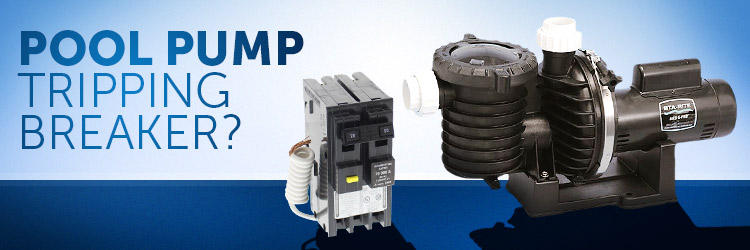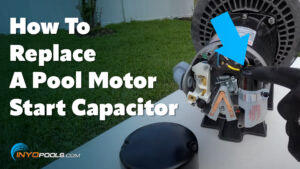Electrical problems can be among the most mysterious and frustrating that pool owners experience. They are also dangerous to the untrained DIYer so great caution – or a licensed electrician – is required when attempting to diagnose. Here are the most common reasons we see when it comes to pool pumps tripping.
Moisture
GFCIs are quite sensitive to moisture so if your breaker trips after a storm, you might just need to let the sun do its thing for a day or two. If it’s not summer, you can probably just leave the pump off for a day and try again once everything has had a chance to dry. In the summertime, you can still get by with your pump not running for one or two days but it will require some extra chlorine (shock) and manual circulation with a pole or paddle a couple of times per day.
Keep in mind that rain isn’t the only possible source of water. A misdirected sprinkler, spray from power washing, even high humidity can affect a GFCI.
Bad or Wrong Breaker
Sometimes breakers just fail due to age or inferior quality. If the problem does not appear to be with your pump and/or motor, try replacing the breaker.
You could also have the wrong size breaker if you recently bought a new pump or motor that was not an exact match to the previous model. Confirm you have the correct breaker size by checking how many amps the new motor requires.
Short in Pump
You might be able to spot an obvious pump motor short by disconnecting power and taking off the motor end cap. Make sure all wiring is properly connected and nothing appears obstructed or burnt. Insects who decide your motor makes a really cozy home can create an electrical short by blocking contacts.
Wrong Voltage
Most complete pumps and replacement motors leave the factory set at 230v to prevent installers from accidentally running 230 volts to a motor that is set to 115v. This has saved many motors from premature frying but it also results in many confused homeowners. Typically in this scenario, the pump will initially come on, then shut down, repeat. Check to see which voltage your motor is set to and what voltage you have running to it.
A Quick Fix
One quick thing to check is if the “reset” button on the GFCI simply needs to be pressed back in. If the GFCI trips, then you will need to press the reset button to restore electricity back to your equipment. Watch this helpful GFCI outlet video for more details.
Always remember that addressing electrical issues requires proper knowledge and safety precautions. If you are in any doubt, enlist the help of a qualified pool professional.














Leave a Reply